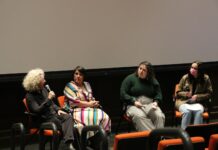Author: Natania Reed, Senior Writer
Lodged somewhere between myth and reality, the Museum of Jurassic Technology, located in Culver City, is a self-proclaimed “educational institution dedicated to the advancement of knowledge and public appreciation of the Lower Jurassic.” This ambiguous description loses any meaning upon entrance into the museum, which features a bizarre assortment of artifacts and interactive gadgets, none of which explain anything about the museum’s alleged Jurassic period. The term “Jurassic technology” is not meant to be interpreted literally but instead attempts to harken back to a long-gone era of underdeveloped scientific discovery that was based on superstitious beliefs. This museum resembled a cabinet of curiosities.
The collection at the museum is nearly impossible to explain to someone who has not been before. It lies somewhere between a seemingly unrelated selection of artifacts, a glimpse at Victorian-era technology and a critique on the capacity of human creation and imagination. From a collection of x-ray images of flowers to a display case that reveals a scale model of Noah’s ark, it is difficult to tell how seriously one should take the exhibitions.
The lines are consistently blurred between truth and fiction, and it seems possible that the museum curators are playing an elaborate joke on the patrons. The dimmed lighting, elaborate and descriptive placards, complete with references to scholarly texts and pseudo-scientific studies and the small museum store featuring books and knick-knacks all give the impression of an earnest educational pursuit.
However, the actual content of the museum – the bizarre and random subject matter and the discontinuity between exhibitions – seems to parody the institution of museums. The patrons, both during my visit and based on Yelp reviews, do not seem to grasp whether the museum is a serious educational venture. Some guests chuckled throughout their visit, eagerly playing with the interactive features and gawking at the exhibits, while others appeared more confused, carefully reading the labels and maintaining an aura of severity.
Whether exhibitions hold some truth or none at all is completely irrelevant. Despite a questionable line between reality and fiction, the museum is by far one of the most fascinating establishments in Los Angeles. A gallery entitled “The Unique World of Microminiatures of Hagop Sandaljian” features a collection of microscopic figures, including Disney’s Goofy, Pope John Paul II and Napoleon I, all delicately placed in the eye of a needle. The voiceover in the room claims that these miniatures have been carved and painted using a single human hair.
Another gallery titled “The Lives of Perfect Creatures” is devoted to realistic portraits of cosmonaut dogs that participated in the Soviet space program in the 1950s and 60s. The “Garden of Eden on Wheels,” a third gallery featured in Jurassic Technology, uses large posters with black and white photography and incredibly detailed and life-like dioramas to detail the history and spread of trailer parks in Los Angeles.
In what is perhaps the most interesting, if unsettling, exhibit, “Tell the Bees: Belief, Knowledge and Hypersymbolic Cognition,” pre-scientific remedies and superstitions are explored through artifacts and placards. “Sheeted Mirrors,” which shows the interior of a miniature house with mirrors and wall decorations, explains how “mirrors should be sheeted or draped during thunder or lightning storms and photographs should be turned to face the wall.” Brief references are made to nature journals and scientific texts, though the legitimacy of said text is questionable. In the Middle Ages, ant eggs, explains one display case, were used as a medical treatment to cure “love sickness,” and duck breath was a common antidote for thrush.
In addition to the incongruent and strange assortment of exhibitions on the first floor, the museum features a second story that includes an outside garden and a newly added tea room. The Tula Tea Room, constructed in 2005, resembles the study room of Tsar Nicolas II in St. Petersburg’s Winter Palace, and a solemn, elderly woman offers the patrons delicious Georgian tea and cookies. The museum is virtually hidden on busy Venice Boulevard in Culver City but is worth a visit for those who love the whimsical and the strange. The museum is open Thursdays from 2 p.m. until 8 p.m. and on Friday through Sundays from noon until 6 p.m. The suggested donation for students is $3.
This article has been archived, for more requests please contact us via the support system.
![]()






































